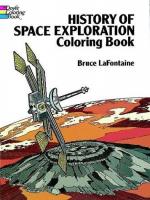|
This section contains 4,109 words (approx. 14 pages at 300 words per page) |

|
Many of the tragedies and close calls of the early space program were reminiscent of early-twentiethcentury flight. The technology was in its infancy, the dangers were not well known, and the equipment was primitive by modern standards. During the United States's Mercury program in the early 1960s, NASA managed to send America's first astronauts into low orbits around the Earth by using computers connected to teletype machines and consoles equipped with rotary dial phones. First-American-in-space Alan Shepard peered out of his Mercury 1 capsule through a mechanical periscope. "And Mercury Mission Control," notes science writer Mark Williams, "was dominated by a huge map of the earth across which a toy-like spacecraft model was moved, suspended by wires, as the capsule orbited; on boards beside the map, measurements were plotted by sliding beads-resembling those of an abacus-moving up and down more wires."4
Notable advances...
|
This section contains 4,109 words (approx. 14 pages at 300 words per page) |

|




